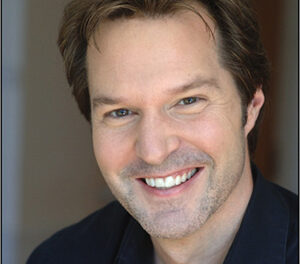Duke Gardens’ summer series of concerts has begun and unlike its non-classical counterparts, the Ciompi Quartet Presents Series takes place in the air-conditioned comfort of lovely, rustic Kirby Horton Hall. This year there will be four concerts, each presented by and featuring a member of Duke University’s most esteemed arts treasure, the Ciompi Quartet. The first emcee, so to speak, was violist Jonathan Bagg. This was actually the first of a pair of concerts, Elation I & II, that featured a group of consummate guest musicians in a variety of relatively unusual combinations.
Returning from a wonderful concert last summer was guitarist Oren Fader, faculty member of the Manhattan School of Music since 1994. He was joined by Grammy Award winning soprano Ilana Davidson in the concert opener, two lute songs by John Dowland, the most famous of a very crowded field of Elizabethan lutenist-composers. The first was “Flow My Tears,” as good a tear-jerker as any. Long expressive lines and lush harmonies make this one of the most evocative and beautiful songs of lost love of any century. Fader played with seamless harmonic changes and clear, bright tones without overpowering the text. In this slow moving song, Davidson’s frequent breaths seemed abnormally loud and tended to break the somber mood. Things brightened up considerably with the upbeat gem “What if I Never Speede.,” from Dowland’s Last Booke of Songs or Aires (1603). Fader and Davidson were in perfect accord as the singer beautifully soared above the guitarist’s well-executed accompaniment.
Most songs have a chordal instrument, such as piano, guitar or organ backing them up, so it is unique to hear a vocal work accompanied just by flute, such as Albert Roussel’s Deux poemes du Ronsard. Flutist and fellow Grammy Award winner Laura Gilbert joined Davidson for this very French work from 1924. The first, “Rossignol, mon mignon,” is yet another rather pedestrian “nightingale” poem whose text pales next to the virtuosic parts for both singer and flutist. As befits both the time period and the nationality of the composer, this work has elements of impressionism scattered throughout. The second, translated as “Sky, Air and Winds,” is a more plaintive ode to nature and love. This set was a perfect vehicle for both musicians, each demonstrating remarkable breath control, beauty of tone, and effortless grace through difficult passages.
Were it not for the next work, it is almost a certainty that no one would have even heard of the word “Arpeggione.” An instrument that is a cross between a guitar and cello, and whose lifespan lasted barely a decade after its invention in 1823, Schubert wrote this superb sonata that bears its name. Most often played as a cello sonata with piano, but this time we heard a unique transcription for viola and guitar. Jonathan Bagg and Oren Fader teamed up for this very familiar and quite difficult work – difficult for both parts. It took a bit of time to get used to the sonorities of these instruments, especially for those used to the deep resonance of the cello and the full spectrum of the piano. Having played a version for guitar and clarinet, I can say from experience that the guitar part does not translate from the piano very well and is somewhat awkward and arduous. Fader handled it with great skill and attention to effective dynamics and phrasing. Bagg introduced that deceptively simple but achingly beautiful Schubertian melody at the start of the first movement with a wistful quality and burnished tone. The long lines of the second movement were especially conducive to Bagg’s skillful “endless bow,” but this movement shone light on the shortcomings of the guitar as a piano substitute. The attaca to the final movement led to a lively venture of varying virtuosic episodes of Schubert’s brilliance.
Brazilian composer Heitor Villa-Lobos wrote nine Bachianas Brasileiras for widely varying instrumental combinations. His fifth, originally for soprano and nine cellos, was later arranged by the composer for soprano and guitar, which was the version heard here. The first part is a long ethereal melisma to a spectacular guitar accompaniment containing subtle Brazilian rhythms. A middle section, in Portugese, is mostly a “one note samba” before a return to a repeat of the first section. This is one of the most frequently played of all vocal/guitar works and performed beautifully, as it was tonight, one never tires of it.
Shakespeare’s Romeo and Juliet has probably been used as the subject of more musical works than any other play or book. Ned Rorem continued that tradition in 1977 by composing a major extended work with that name for flute and guitar. It contains nine sections, each titled with a quote from the play followed by which act/scene from which it comes. Rorem’s style is such that there is a healthy mix of lyrical tonal passages and challenging contemporary sections. There are movements that are for each instrument alone, and this balances out the work. This is not a work for amateurs, and the Fader/Gilbert duo transcended the significant technical challenges to evoke the tragedy of this most famous pair of doomed lovers.
The finale was one of the most haunting performances that I have heard. David Kirkland Garner, Ph.D. in Composition from Duke University in 2014, wrote a remarkable transcription of North Carolina ballad singer Dillard Chandler‘s rendition of the song “Awake, awake” for singer, viola, flute, and electric guitar, here premiered. The text, in Appalachian vernacular, is eerie enough, but combined with the other-worldly accompaniment one got the feeling of roaming the foggy mountains, searching for lost loves in the ether. This was truly one of the most effective musical tone paintings I have heard, especially the dying singing/humming through the flute as the music seems to ascend heavenward.
Elation II will be offered on July 3 in the same venue. For details, see the sidebar.












